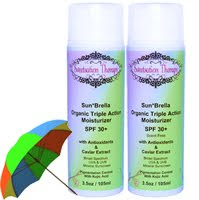
Pregnancy is an amazing experience. Feeling a new life growing inside, kicking at you and responding to your actions is a truly unique experience. You really gain a new appreciation for the abilities of the human body as your stomach stretches beyond anything you had ever imagined to accommodate a new baby. However, there are definite downsides to being pregnant and one of them is the side effect of all that stretching . . . stretch marks.
What Causes Stretch Marks
Stretch Marks occur when the skin is stretched beyond its elasticity. The upper layer stretches and the lower layer of skin tends to tear, causing small rips in the tissue. This results in some rather ugly red marks that feel different from the regular texture of your skin. These will fade to white after your pregnancy, but this can take time and they never really do go away..
Whether or not you will get stretch marks really depends on genetics, the elasticity of your skin and how big you get during the pregnancy. Some women don't grow much at all and have more than sufficient elasticity in their skin to withstand the stretching and remain completely unmarked.
Preventing Stretch Marks
The best way to get rid of Stretch marks is not to get them at all. While 90% of women have the genetic predisposition to stretch marks in pregnancy, that doesn't mean you have to just sit back and let them happen. Prevention is truly the best medicine when it comes to these nasty lines. They may be a banner of your ability to carry a child, but really, most women would prefer to avoid them all together. The best time to start prevention is as soon as you know you're pregnant, long before the skin needs to expand.
Its important to only use organic skin products while pregnant. Most chemicals are not proven safe for your unborn baby and its best to just avoid them. Going organic will give you peace of mind and you'll be able to treat your skin without fear of affecting the child inside.
Organic skin products are just as effective against stretch marks, if not more so, than commercial, chemical laden ones, like Palmers. You'll find that natural ingredients work naturally with your skin to soothe it and soften it. Not only will you be preventing stretch marks, you'll also be promoting softer, more hydrated skin.
What to Look for in Stretch Mark Prevention Treatments
Certain organic products work better than others against stretch marks. Basically, you want to moisturize your skin and enhance the elasticity. A good prevention cream will also provide some healing power to help any existing tears in the skin heal faster, without getting worse. This is particularly helpful if you are starting treatment later in the pregnancy.
Organic stretch mark creams usually use one or more of the following ingredients:
Shea Butter: By far the most common ingredient used in stretch mark prevention since is one of the best natural moisturizers on the market. It also has healing properties to help with any existing stretch marks. Coconut Oil: A very good moisturizing oil that also enhances elasticity and hastens healing of existing problems.
Olive Oil: Another good moisturizer that helps boost elasticity and soften skin, making it more supple and resistant to tearing.
Any organic skin product designed to treat and prevent stretch marks should include one of the above ingredients for maximum benefit. Often they will have other natural ingredients, as well , to promote healing and enhance the moisturizing effect. Sweetsation Therapy's Organic products contain over 30 elasticity boosting ingredients and offers a great choice of products for moms-to be.







